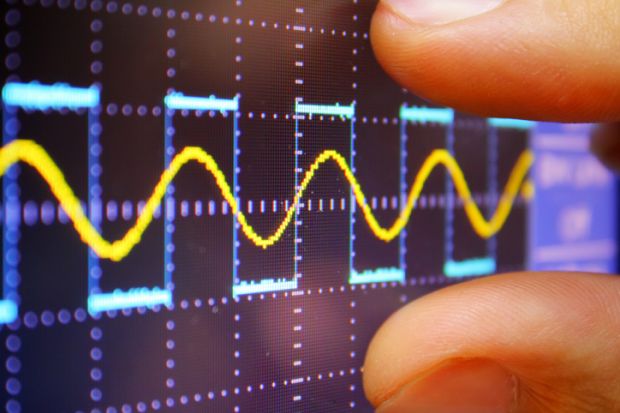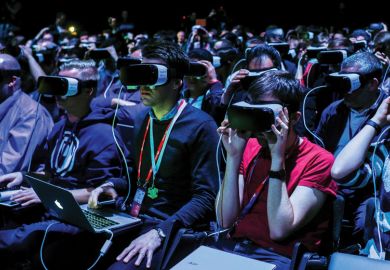Universities are making greater use of holograms and home experiments to teach the “hands on” elements of laboratory work and medical training online.
In the case of medicine, argued Gareth Frith, technology-enhanced learning manager at the University of Leeds, “Covid has been accelerating the already existing trends”.
In the past year or so, he has seen increasing uptake of “holographic forms of teaching”. GIGXR’s HoloPatient, for example, presents students with scenarios such as “someone who has come into hospital as an emergency patient because they have fallen off their bike and cut themselves and are being sutured but are still obviously ill and getting worse. It’s a question of getting a student group to diagnose what is wrong with that person and come up with solutions under time pressure.”
Such teaching methods, like virtual reality tours of a histopathology lab, can enhance the learning that students gain from the limited amounts of time they get to spend in physical laboratories and operating theatres. But they have generally involved working face-to-face in small groups. The recent launch of GIGXR’s extended HoloPatient Remote application would enable universities such as Leeds, said Mr Frith, to further Covid-proof their offerings by “relaying the image to the students’ iPads or tablets even if they are working from home”.
Where such technological solutions are not easily available, universities have had to improvise.
Earlier this year, faculty at Stanford University started wondering how they could deliver a standard introductory chemistry course. To provide remote learners with the closest possible equivalent, they began looking for pre-packaged kits. Finding them unsuitable and expensive, they decided to create their own.
These included plastic beakers, test-tube sets that would not break in the post and small quantities of chemicals packaged in child-proof containers. It was possible to supply pieces of calcium and magnesium, but not highly flammable lithium, sodium and potassium, along with more familiar items such as baking soda, milk of magnesia and a powder made from concentrated boiled cabbage that changes colour dramatically in response to various reactions.
“In the final weeks of spring quarter,” reported lab manager Amanda Nelson, “we prepared, packed and shipped 25 kits in a matter of days” – a trial run for the hundreds of students arriving for the autumn term.
First-year physics students at Imperial College London who were unable to reach the UK or were required to self-isolate, meanwhile, recently received a “lab in a box”.
Each of these, explained senior technician Graham Axtell, contains items such as “a couple of multimeters, an oscilloscope, a little amplifier and hand-wound coils – one of my colleagues over the summer had to wind coils of wire with 100 turns on one and 50 on another”.
Much of this equipment can be simply assembled or purchased. Other items have required modification. The large oscilloscopes have been reimagined, said Mr Axtell, in a format “not much bigger than a mobile phone whose output goes straight to your computer rather than having its own screen”. The interferometers, notoriously sensitive devices, had to be “shippable around the world partially assembled”.
Meanwhile, the research-grade interferometers usually used on campus have been “connected to the world using another custom-made electronics board, allowing students to activate remotely a high-powered laser, ultraviolet lamps and mercury lamps, which they couldn’t operate safely in a home environment. But they will still collect the same data as they would in the lab.”
Most of the experimental elements of the physics courses can be recreated off-site using the labs in a box. A remaining challenge is the first-year optics modules, where the number of components required would be too expensive and heavy to send out. Hence the need for further innovation, with Imperial exploring a solution using virtual reality.
Register to continue
Why register?
- Registration is free and only takes a moment
- Once registered, you can read 3 articles a month
- Sign up for our newsletter
Subscribe
Or subscribe for unlimited access to:
- Unlimited access to news, views, insights & reviews
- Digital editions
- Digital access to THE’s university and college rankings analysis
Already registered or a current subscriber? Login








